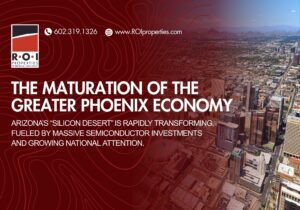As inventory continues to grow in the Phoenix residential market, sellers are finding a need to adjust their expectations if they want to get their property sold, let alone at a premium price. Sellers always want to challenge a marketplace and achieve highest and best pricing. Although that is a solid objective, now is a time to recognize that you cannot be outside the expectations of the buyer base, and that the dynamics of the residential market are very localized. As they say in the car ads, your mileage may vary.
Inventories are as high as they’ve been in years, although the current environment is quite different and February saw 2.3% more closed sales than last year. In 2016, for example, we were still burning through a lot of REO inventory from deals that had gone into foreclosure—something that is not happening currently in significant volume. The hardest-hit areas include exurban communities such as Buckeye, Goodyear, Avondale, Queen Creek, and areas of the far north Valley. In general, these are newer communities where homes were bought on an affordability basis when interest rates were low during the pandemic. Several years later, outlying areas have not necessarily appreciated the way that interior areas have.
January to February 2025, the supply-demand index decreased from 90.6 to 84.7, with a whopping 8.7 point increase from 84.2 to 92.9 in supply. The demand index rose from 76.3 to 78.7, but it wasn’t enough to offset the rise in inventory—putting Greater Phoenix back into a buyer’s market. This means the local housing market has been in a buyer’s market for 3 out of the past 4 months, but it’s been in a buyer’s advantage (overall index under 100) for 6 months. The beginning stages of a buyer’s market typically involve sustained prices and an increase in buyer incentives. The more a buyer’s market is prolonged, the higher probability of a downward glide in price measures, as negotiations slice a little more off the list price. While buyer demand is low, it’s not declining overall. Current market conditions are driven by a level of new listings entering the market not seen since 2019, which is providing existing buyers a plethora of quality choices.
Phoenix Residential by the Numbers
As of the end of February, new listings were up 17.5% year-to-date compared to last year, with new listings between $600K–$1M having the highest percent increase. Some notable shifts are taking place:
- Available supply under $300K is up nearly 60% over last year.
- New listings of mobile homes are in line with last year, putting 2025 on track to possibly be the highest year recorded for mobile home listings added to supply, pushing available units for sale up 36% over last year.
- Active condos under $300K are up 85% in supply and active single family homes under $300K are up 81%.
- Supply is up within all price ranges, not just the lowest tiers. This means that price reductions are also on the rise, up 54% over last year with 56% of active supply experiencing a price drop during February.
- The average list price per square foot on all properties under $1M hasn’t changed compared to this time in 2024, and over $1M asking prices are down -2.8%.
Contract activity continues to be suppressed in the lower prices ranges, where buyers are more affected by mortgage rates. In contrast, the upper price ranges have been offsetting that suppression and year-to-date closings are up 6% over last year. This continuing phenomenon in a high-rate environment is causing average and median appreciation measures to skew high, greater than the rate of inflation, which is not indicative of what most homeowners are experiencing. Under $600K, appreciation rates are not outperforming the rate of inflation, but above $600K appreciation rates are higher than the rate of inflation, a byproduct of sustaining a mild seller’s market in upscale and luxury communities.
What Lies ahead for the Resi Market?
If mortgage rates decline, it’s likely that sales on the lower end will pick up and could ironically pull the median and average measures down. This is why it’s important to examine appreciation rates by price range and area year-over-year: to eliminate the skewing effects of properties on the high or low end gaining or losing market share. The flurry of administrative changes in the federal government can cause volatility within the stock markets, employment reports, GDP measures, and investors’ emotions. Change, even when it’s embraced and welcomed, usually involves chaos and uncertainty. If stocks, cryptos, corporate profits, and exchange rates become too volatile, then the luxury market could stall as buyers wait for the dust to settle. This was experienced in 2018 during tariff negotiations. On the flip side, if investors look to bonds for security, then mortgage rates could decline and mainstream buyers could be activated.










